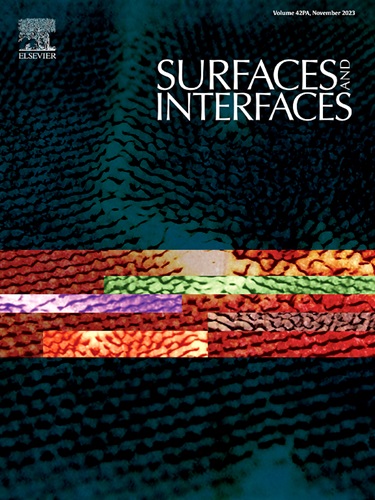Exploring the growth and optoelectronic properties of PtSe2 films via pulsed chemical vapor deposition
IF 5.7
2区 材料科学
Q2 CHEMISTRY, PHYSICAL
引用次数: 0
Abstract
Two-dimensional (2D) layered materials exhibit remarkable potential for electronic, photoelectronic and catalytic applications due to their unique layer-dependent physical properties. Among these materials, platinum diselenide (PtSe2) has superior characteristics such as high carrier mobility, a widely tunable band gap, and excellent stability, making it a promising candidate for optoelectronic devices. However, an efficient and scalable synthesis method for high-quality PtSe2 is still lacking. Herein, we report the synthesis of large-scale PtSe2 thin films via pulsed chemical vapor deposition (P-CVD). In the P-CVD process, adequate selenization during the precursor interruption time enables the production of high-quality PtSe2 films with a Pt:Se atomic ratio close to 1:2, compared to the conventional CVD method. Additionally, we investigate the lateral and vertical growth modes of PtSe2 controlled by the Ar flow rate. The fabricated P-CVD PtSe2 photodetector exhibits enhanced performance at 940 nm, with a responsivity of 6.4 and 14.1 mA/W and response times of 75/78 ms and 181/182 ms for films grown at 50 and 200 sccm, respectively. These findings provide insights into the growth behavior of P-CVD PtSe2 depending on the Ar flow rate and demonstrate its photodetector characteristics in the near-infrared range.

求助全文
约1分钟内获得全文
求助全文
来源期刊

Surfaces and Interfaces
Chemistry-General Chemistry
CiteScore
8.50
自引率
6.50%
发文量
753
审稿时长
35 days
期刊介绍:
The aim of the journal is to provide a respectful outlet for ''sound science'' papers in all research areas on surfaces and interfaces. We define sound science papers as papers that describe new and well-executed research, but that do not necessarily provide brand new insights or are merely a description of research results.
Surfaces and Interfaces publishes research papers in all fields of surface science which may not always find the right home on first submission to our Elsevier sister journals (Applied Surface, Surface and Coatings Technology, Thin Solid Films)
 求助内容:
求助内容: 应助结果提醒方式:
应助结果提醒方式:


